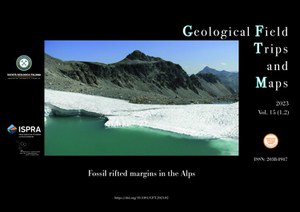Fossil rifted margins in the Alps
The significant progress achieved over the last fifty years in understanding continental rifting and oceanization processes demonstrates the benefit of an iterative workflow between onshore field studies and offshore geophysical studies. On the one hand, geophysical studies can image intact present-day rifted margins in their entirety. However, the resolution of refraction and reflection seismic sections is relatively low, and most parts of the margin remain largely inaccessible, even to deep-sea drilling. On the other hand, field studies of rifted margin remnants exposed in orogens offer easy-to-access, high-resolution outcrops. Yet, they provide only local, discontinuous, and often overprinted insights into the former margins and their evolution. With more than one century of published research into the geology of the European Alps, the present-day Alpine orogen and former Alpine Tethys rift system are among the best- described tectonic systems in the world. In the present document, we provide a guide for recognizing key remnants of the former Alpine Tethys rift system (Fig. I.0) and discuss how the derived observations can be integrated into the study of present-day rifted margins. This document is structured around three parts: • Excursion notes: we first provide an overview of the state of the art on rifted margins and its historical evolution. Second, we outline the paleogeographic framework of the Alpine rift system and discuss its uncertainties. Third, we describe the structural and stratigraphic relationships of well-preserved remnants of the Alpine Tethys rift system and propose a crustal-scale reconstruction for one transect across the former Alpine Tethys rift system. Finally, we provide insights into the spatio-temporal evolution of the Alpine Tethys rift system. • Excursions: through a series of excursions at illustrative remnants of the Alpine Tethys rift system, we propose a journey across the proximal part, the distal part, and the so-called ocean-continent transition (OCT) of the former North-Adriatic margin. In particular, we display the scale of the considered geological objects, report the nature of the crust, mantle, and sediments, and highlight the structural and stratigraphic relationships between the different domains. • Thematic sheets: we provide a series of short syntheses on different geological themes and illustrate them with examples from the Alps. Themes include the petrology of the Alpine Tethys lithosphere, the tectono-stratigraphic record and fluid signature during the Alpine Tethys rifting, the tectono-structural characteristics of the Alpine Tethys rift system and Alpine orogen, the impact of inheritance vs rift-induced and orogenic processes, and the isostatic evolution of future distal margins during rifting, with special focus on the Briançonnais domain in the Alps.
DOI: https://doi.org/10.3301/GFT.2023.02

